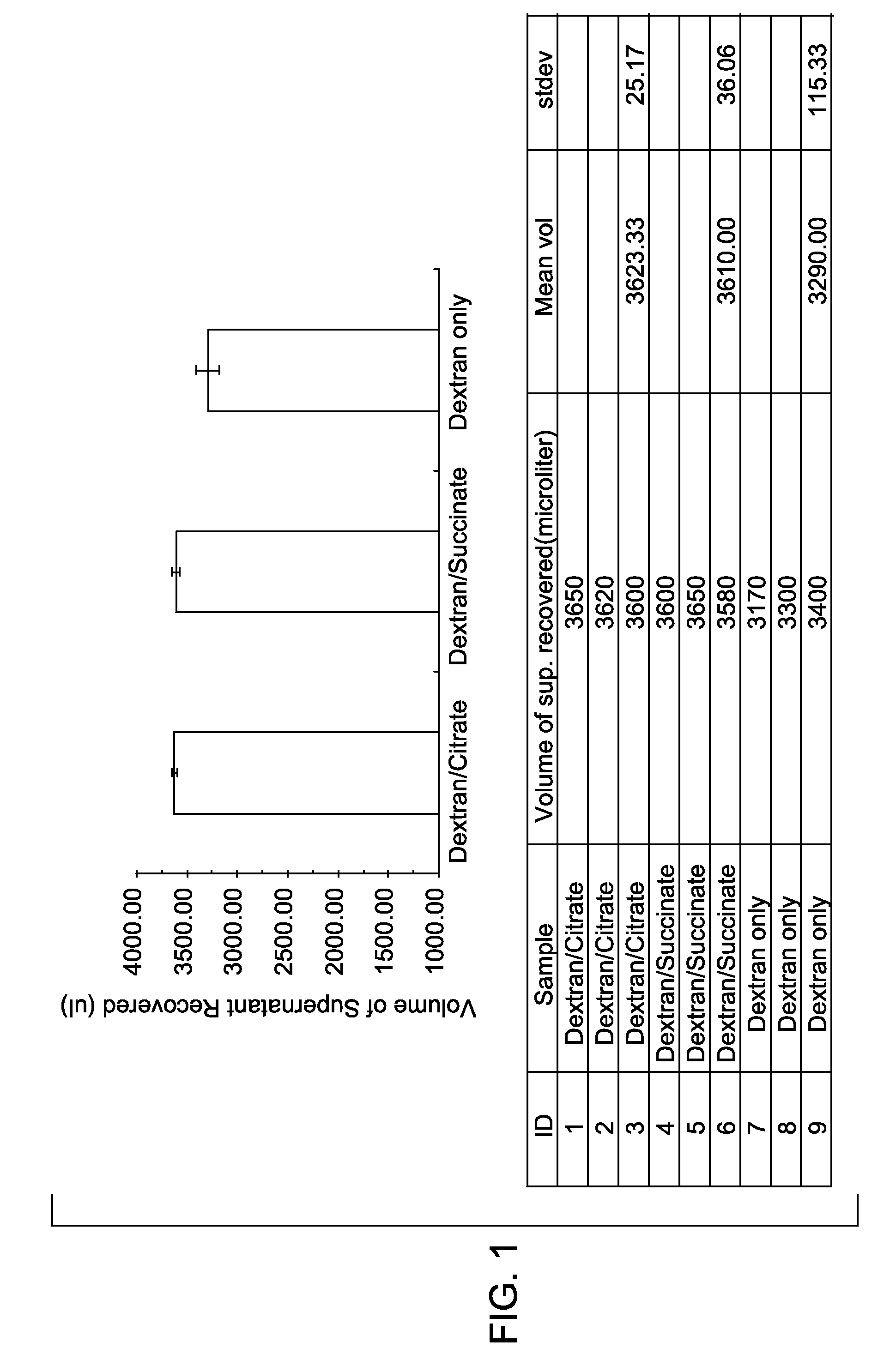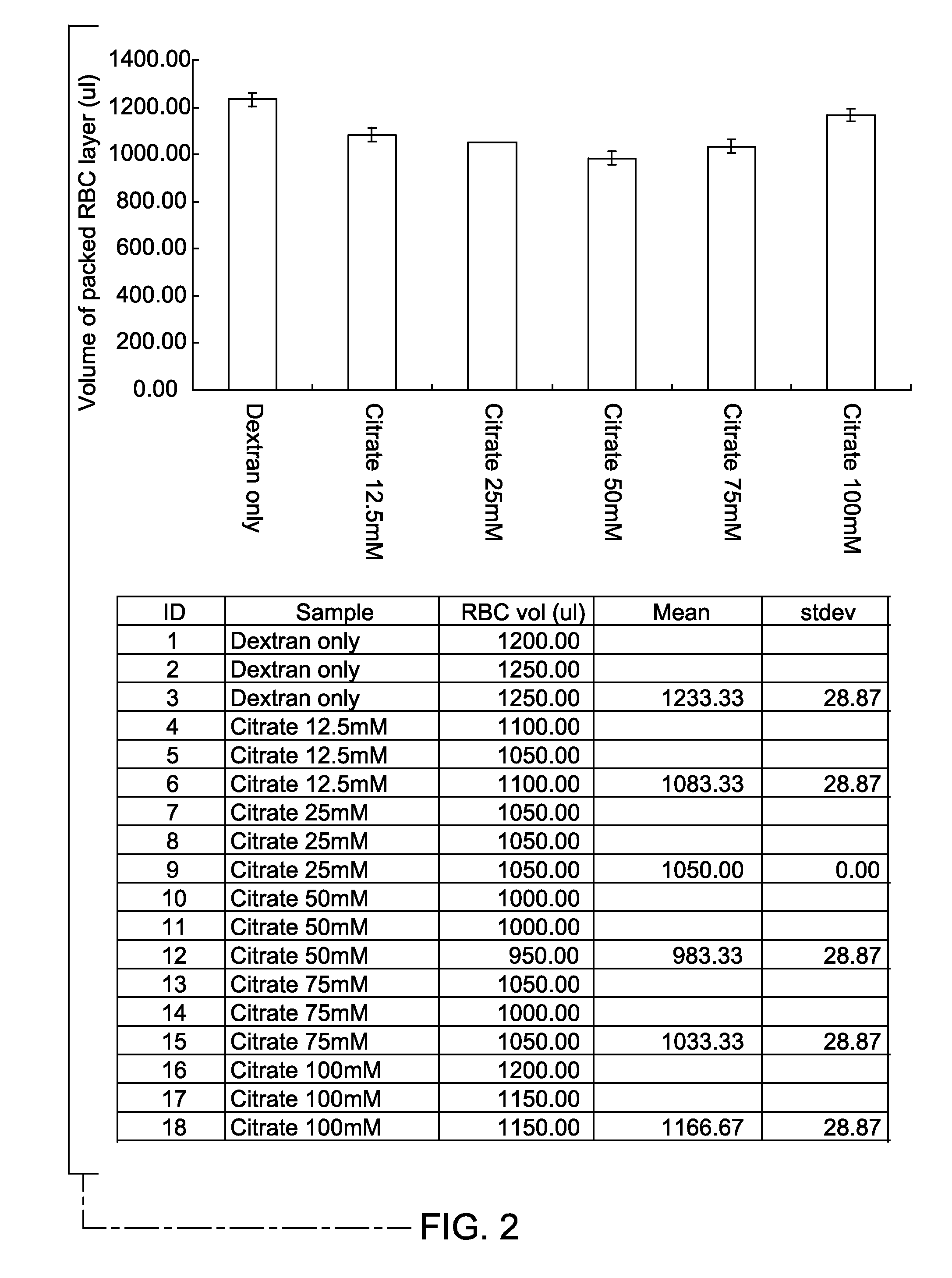Methods and kits for enhancing sedimentation and recovery of cells in a sample
a technology of blood cells and kits, applied in the field of sedimentation of blood cells and nucleated cell recovery from blood samples, can solve the problems of limited clinical utility of these agents, and achieve the effects of increasing the efficiency of blood separation methods and systems, increasing the recovery of total nucleated cells (tnc), and being non-toxi
- Summary
- Abstract
- Description
- Claims
- Application Information
AI Technical Summary
Benefits of technology
Problems solved by technology
Method used
Image
Examples
example 1
[0026]Materials: Human peripheral blood was used for the experiments. The dextran T500 used in this example was obtained from Pharmacosmos A / s, Denmark; sodium citrate dihydrate was obtained from J T Baker; and sodium succinate was obtained from Sigma, St. Louise, Mo.
[0027]The extent of red blood cell aggregation was measured in vitro in the presence of different biocompatible enhancers. A control sample, without an aggregation enhancer, was prepared by mixing 2.4 ml of a blood sample with 2.4 ml of phosphate buffered saline (PBS) containing 3% Dextran T500, and then incubated (the final concentration of dextran was 1.5%). Two test samples were also prepared. The first test sample was prepared by mixing 2.4 ml of the blood sample with 2.4 ml of PBS containing 3% Dextran T500 and 100 mM sodium citrate, and then incubated (the final concentration of dextran was 1.5% and the final concentration of sodium citrate was 50 mM). The second test sample was prepared by mixing 2.4 ml of the bl...
example 2
[0030]The efficiency of red blood cell aggregation was measured in vitro in the presence of varying concentration of non-toxic enhancer. A blood sample incubated with 1.5% Dextran T500, without an enhancer, served as a control. The control sample was prepared by mixing 2.0 ml of the blood sample with 2.0 ml of PBS containing 3% Dextran T500. Blood samples containing 1.5% Dextran T500 and 12.5 mM, 25 mM, 50 mM, 75 mM and 100 mM of sodium citrate as the enhancer served as the test samples. The test samples were prepared by mixing 2.0 ml of blood sample with 2.0 ml of PBS containing 3.0% Dextran T500 and 25 mM, 50 mM, 100 mM and 150 mM of sodium citrate, respectively, to reach final concentrations of 1.5% for dextran in each test sample, and 12.5 mM, 25 mM, 50 mM and 75 mM, for the respective test samples. The samples for control and test sets were incubated for 20 minutes, at room temperature.
[0031]After sedimentation of red blood cells, the fluid was recovered. The volume of the supe...
PUM
 Login to View More
Login to View More Abstract
Description
Claims
Application Information
 Login to View More
Login to View More - R&D
- Intellectual Property
- Life Sciences
- Materials
- Tech Scout
- Unparalleled Data Quality
- Higher Quality Content
- 60% Fewer Hallucinations
Browse by: Latest US Patents, China's latest patents, Technical Efficacy Thesaurus, Application Domain, Technology Topic, Popular Technical Reports.
© 2025 PatSnap. All rights reserved.Legal|Privacy policy|Modern Slavery Act Transparency Statement|Sitemap|About US| Contact US: help@patsnap.com


